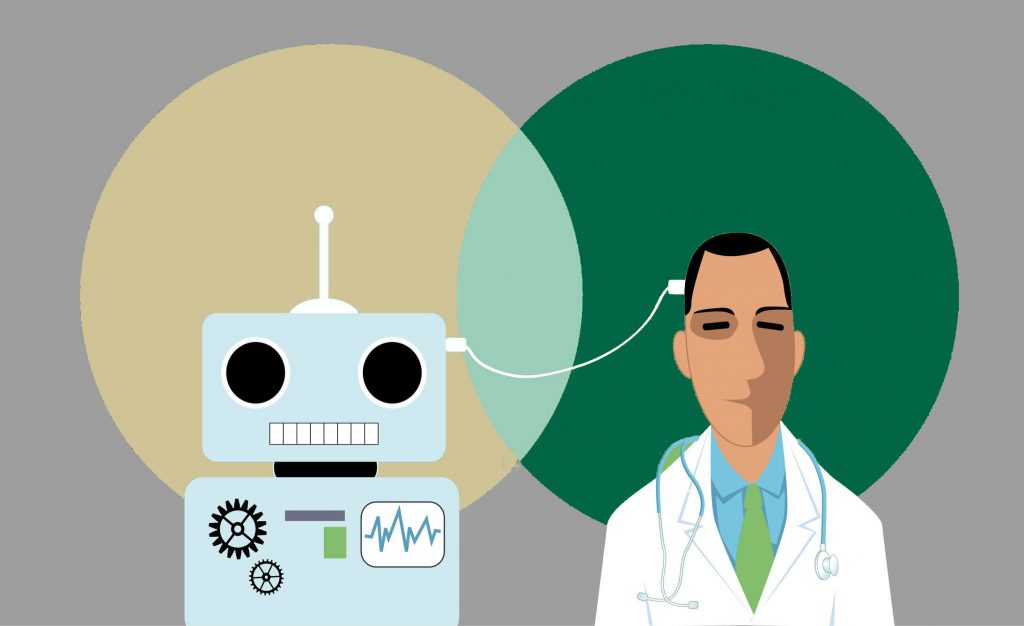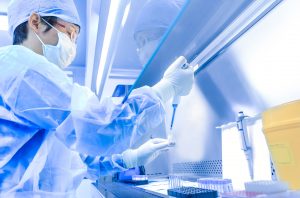Computer scientist Geoffrey Hinton doesn’t mince words when he talks about the future of machine learning.
“They should stop training radiologists now,” Hinton said in one speech, according to an article from The New Yorker.
Hinton and others like him are convinced that the field of radiology, at least as a human endeavor, will be obsolete in a decade at the longest. Machines, he insists, will do the job and do it better.
His faith is in deep learning, of which he is considered the father. Deep learning is based on a computing strategy called a “neural network,” which is designed to mimic the way a human brain works.
Hinton’s opinion isn’t unusual these days. It’s supported by stories of computers besting physicians in predicting heart attacks and diagnosing pneumonia.
Deep learning begins with large quantities of data, such as data from electrocardiograms or chest X-rays, being input into a neural network. Once the network has been trained to differentiate a regular example from an irregular one, it begins to generate its own algorithms based, as a human brain would, on observation and experience.
The approach has proven adept at identifying complex patterns in images and audio, and it has led to the development of better-than-human image-recognition and voice-recognition systems.
It’s a scenario that has thrilled some, particularly those who come from the tech side, and worried others, who wonder if their professions will be made obsolete. What actually occurs will likely be less dramatic than either viewpoint envisions. But the fact that advances are provoking these sorts of conversations is testament to the increasing ability of machines to be taught to think like humans.
Less evangelical forecasters talk in terms of evolution and collaboration. While reading the words “post-human medicine” may send a chill up your spine, an article from STAT suggests that rather than taking away doctors’ jobs, these technological advances will reveal what the physicians’ actual function is, by performing many of the duties that once consumed so much of their time.
“If a machine can do it, then it was never really human to begin with,” according to the author of the STAT article, Houston physician Bryan Vartabedian, M.D. He writes that members of his profession must stop “seeing ourselves as victims of the machine,” and instead “see ourselves as active participants in not only shaping the future but defining our role before we arrive.”
The best outcomes will occur through the collaboration of physicians and machines, according to Bart de Witte, IBM Germany’s director of digital health.
“To achieve the best results humans and machines have to collaborate — they have to become partners,” de Witte writes in an article for Dataconomy, adding that this also requires humans to acquire “a new set of skills and a new way of thinking.”
Machines can’t replicate the human touch, the ability of a flesh-and-blood physician to convey empathy, encouragement and the feeling that the patient is being cared for.
A machine may learn how to diagnose an illness, formulate a prognosis and recommend treatment, but it can’t give the patient the comfort and support that another human can.
More opportunity for one-on-one contact with patients may turn out to be a benefit of machine-driven healthcare, however.
Cardiologist Ethan Weiss is optimistic about the potential of new technology to help physicians find the answers to complex medical questions. He doesn’t, though, see it replacing medical professionals.
“I hope it will help me do things that I don’t want to do,” Weiss said in an interview with CNBC.
Rasu Shrestha, chief of radiology informatics at University of Pittsburgh Medical Center, told CNBC that he doubts Geoffrey Hinton’s prediction that artificial intelligence will replace his profession. He does, however, hope it will perform tasks he feels relegate him to the roles of a “mere diagnostician” or a “human robot.”
In doing so, technology would let Shrestha spend more time directly with patients.
“Health and health care is too human a notion for AI alone to cure it,” said Shrestha.



